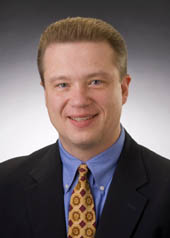An old drug is making a new comeback, and the home medicine cabinet often is the gateway.
is the gateway.
Heroin, a pop culture star in the 1970s, is back for an encore. According to the Indiana Prevention Resource Center (IPRC), 2.1 percent of Hoosier high school seniors have ever used heroin, 50 percent higher than the national average.
While the percentage of heroin use seems small, the recent increase is not. Pat Harrington, who serves as the Tippecanoe County prosecutor, said heroin cases have risen by 600 percent in the last five years, and the trend is affecting law enforcement.
“There are police officers who have been on the department for a number of years, and they’ve actually had to go through drug education recognition classes because heroin was nonexistent,” Harrington explained. “Heroin now is so cheap and is so readily available.”
Harrington said teens often are introduced to a drug dealer by someone they know. Natalie (last name withheld as she undergoes drug rehabilitation) agreed that access is easy. “If you get with the other drug users in your school, you’re just bound to find it,” she said. “It’s just so easy for us to find it.”
Natalie’s drug abuse did not start with heroin. Instead, she started in the family medicine cabinet. “I did prescription drugs for a long time before I started doing heroin,” Natalie admitted. “I never thought I would do heroin ever, but I was taking way too many pills, and it became way too expensive. Going from prescription pills to heroin, it’s way cheaper.”
According to IPRC, Indiana has the nation’s second highest rate of high school students abusing prescription drugs – 21 percent. The top source of those drugs: buying pills from a friend. “They’re everywhere,” Natalie asserted. “The drug kids at school. Adults who don’t want the pills anymore. Folks selling unused prescription drugs.”
Cierra (last name withheld) said her brother Jesse started smoking marijuana, which led to prescription pills, which led to heroin, which led to his death. “My brother told me you’re always chasing your first high,” Cierra related. “Your first high is the best high you’re ever going to have, and that’s why you continue to do harder and harder drugs. That’s why kids progress from marijuana, to pills, to heroin because they’re looking for a better high.”
Cierra said an addict moving from one drug to the next is never satisfied. “Ever. That’s what is so addictive about it.”
Cierra saw that relentless cycle stop her brother’s life. Natalie, meanwhile, simply decided to stop. She confessed to her mom and checked into re-hab.
“I was sick of feeling filthy,” Natalie lamented. “You feel disgusting to your core. I was sick of being sick. I am sick of chasing that high every single day. I was sick of everything I had to do just to get it. Stealing and lying. Cheating my way through life. And it’s something that I never want to do again.”
And something parents never want their kids to do in the first place. While prevention efforts offer no guarantees, IPRC recommends that parents, educators and youth workers maintain open communication with children and teens – communication about what they hear from friends and see in the community as well as communication about temptations they might face to take drugs.
Parents can help prevent prescription drug abuse by continually counting the legally prescribed pills at home and then keeping the medicine bottle out of reach, even hidden. Caring adults also can watch for warning signs of drug abuse including depression, a lack of motivation, constant lying about friends and whereabouts, severe weight loss and frequent tiredness and sleeping.
Natalie’s mom, Jennifer, warned all parents to stay on watch for drug abuse, including heroin. “I falsely thought that I was exempt from this,” Jennifer said. “You think of a junkie. You think of something you heard of back in the 70s. You don’t think of a middle class child who now is in school.”
Harrington added, “Youth today face this on a daily basis, this temptation to use drugs. Heroin doesn’t care about your race or your religious preference or your position in life. It’s across the spectrum.”
Bill Stanczykiewicz is President & CEO of the Indiana Youth Institute. He can be reached at iyi@iyi.org.



























